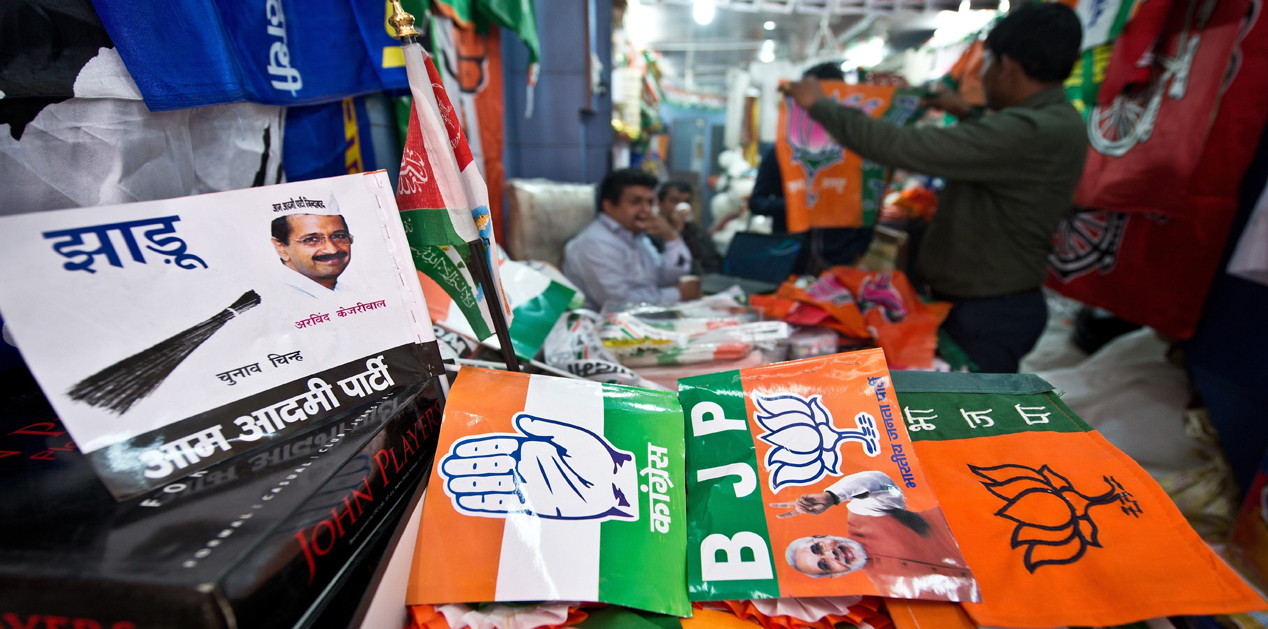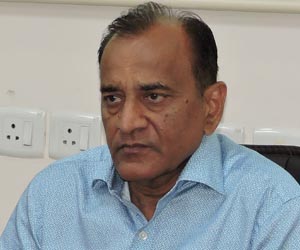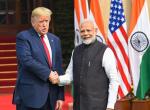2017 is politically the most important year ahead of 2019, when the Lok Sabha election will be held. Elections to five State Assemblies are in the process. Of them, Goa and Punjab have already voted, while Uttar Pradesh, Uttarakhand and Manipur will do so in the coming days. Towards the year-end, Prime Minister Narendra Modi’s home State Gujarat will vote for a new Assembly. Some part of the country or the other is always is an election mode, and so it would be hyperbolic to suggest that these polls will define the character of 2019 politics. But there is no escaping the fact that they could determine the shape and form. There is a rather explosive mix of national and local factors which are unique because they never existed before.
The two most potent national issues are demonetisation and the surgical strikes against terror launch pads inside Pakistan-occupied Kashmir. The Modi Government has been unhesitant in playing up the second event to get across the point that here was a regime which was unafraid to hurt while striking the enemy. The Opposition, cornered by the sensitivity of the matter, could only mumble that such actions should not be made public. The Congress especially sought to dilute the impact by claiming that similar strikes had happened during its regime too, but that it had not gone to town, taking credit for a military operation. In its over-eagerness to put the Government on the mat, its vice president Rahul Gandhi even exclaimed the avoidable khoon ki dalali remark. Using the issue suits the ‘masculine’ image of the Modi Government, though. Besides, its position got strengthened when several experts welcomed the surgical strikes and said that they were unique because for the first time, these were deeper into enemy territory and well-coordinated at the command levels beyond the immediate borders.
However, what could impact the electorate more is the November 8, 2016, decision of demonetisation. It has had a direct and widespread impact on the people due to its disruptive nature. Both the Government and the Opposition have sought to exploit it to suit their arguments. While the opposition parties have been hammering home the inconvenience it has caused to people, the common man especially, and demanding to know exactly what benefit has accrued out of the move, the Government has positioned demonetisation as a war against black money and corruption, as also a body blow to terror funding and counterfeiting. Since there have been mixed reactions to the decision, it will be interesting to see how the voters interpret the issue. The results will be a sort of referendum on demonetisation. Some experts have been saying that the outcome of the elections will determine whether the Government will proceed with more similar measures or pull back. But Prime Minister Narendra Modi has said that electoral considerations will not stop his Government from taking bold, if not populist, decisions for the larger and long-term good of the nation. The Government realises that people and businesses have been adversely impacted, and the 2017-18 Budget as well as the Economic Survey of India have acknowledged some slowdown in GDP growth rate in the short run. But it also takes heart from the general public impression that the move was in the national interest. Of course, the success of the warring sides will depend on how well they have managed to ‘sell’ their respective arguments.
That said, local issues will have greater relevance in impacting the results, and these issues differ from State to State. Let’s take Uttar Pradesh, politically the most important and having the potential to swing the result in the 2019 Lok Sabha election. The Bharatiya Janata Party came to power with an absolute majority of its own — the first time in over three decades that a single party managed it — riding on its performance in Uttar Pradesh. It secured a whopping 71 (73 with its allies) out of the 80 on offer. The sweep reduced the Congress to just two seats and the ruling Samajwadi Party to five. The other big player in the State, the Bahujan Samaj Party, failed to get any seat. It was a massive comeback for the BJP, given that it has been out of power there for close to 14 years and, along with the Congress, had been reduced to a small player — with the SP and the BSP dominating the State’s political landscape. The BJP is now hoping to carry that momentum forward.
Its task has been made easier with the rift in the Samajwadi Party. In fact, the crisis in the SP is the most relevant local issue in the State. Chief Minister Akhilesh Yadav and his powerful uncle Shivpal Yadav are at loggerheads and plotting to see the other’s political demise. Shivpal has even hinted at forming a new political outfit after the election result is out on March 11. Party supremo Mulayam Singh Yadav and the Chief Minister’s father too has thrown his weight behind the Shivpal camp. There is talk that he will campaign for the party which has now been effectively snatched away from him and is in Akhilesh Yadav’s control. Mulayam Singh Yadav is a veteran politician and he perhaps believes in having a foot in both camps so that he remains relevant in any given situation.
The impact of the rift within the SP, and within the ruling Yadav family is, however being felt deeply lower down the order. The party cadre is disoriented and demoralised, and there is every possibility of the Shivpal and the Akhilesh Yadav factions working to sabotage each other’s chances in the election. Sensing that he needed fortification, Akhilesh Yadav has forged an alliance with the Congress, against the desires of his father and uncle. Although the Congress has been effectively marginalised over the last two decades or so in the State, it does have a core vote-base which the SP hopes to gain from. For the Congress, the coalition has come as a straw that it can clutch while drowning. Like in Bihar, it hopes to remain afloat, even if it has to settle for an inferior position. At the same time, there is the flip side. Rahul Gandhi’s pet project of wooing the Dalits will take a hit with this alliance and leave Mayawati in a stronger position. The Congress’s drive to attract the upper caste voters too can be dented, since this section of the community is not keen on backing the SP this time around.
The BJP has exploited these development in two ways. The first is by ridiculing the rift as a ‘stage-managed’ one, done by the ruling Yadav clan to divert public attention from its governance failures. The second is by telling the people that the clash is not for people’s welfare but to secure the welfare of the family members. There is, of course, some merit at least in the second charge. Both Akhilesh Yadav and Shivpal Yadav have fought bitterly to take control of the party. The Chief Minister prevailed in the end, ousting Shivpal from the State party chief’s position and appointing his nominee. In fact, the Akhilesh camp went a step further in removing Mulayam Singh Yadav as the national president. Given the manner in which the family has been vertically split into two camps, with assorted members aligning with one or the other group, it is evident that the tussle for hold over the party’s affairs will not end soon. Both Akhilesh Yadav and Shivpal Yadav were determined to control the party ahead of the election, because it gave them the chance to choose their own candidates who could then put their weight behind their patrons in future power fights.
Like the BJP, Mayawati’s BSP also sees in the development an opportunity to bounce back. It has been silently but diligently working out a combination of Dalits and Muslims. The former, it believes with some justification, are already in its kitty; the challenge is to get enough numbers of the latter. Although Mayawati has in the past managed to draw in the Muslims to her fold, the minority community has by and large remained loyal to the Samajwadi Party — or, to be more precise, Mulayam Singh Yadav — for a variety of reasons. The party under the senior Yadav has over the decades bend over backwards to humour this constituency and positioned itself as the champion of minority rights, in the process often alienating the other communities. The BSP believes that the Muslim voters are unsure of a fragmented SP doing well, and so they will shift their support to Mayawati. There is no certainty that this will happen, but if it does in a significant way, the SP’s hope of retaining power will be severely compromised. Mayawati has gone out of her way to distribute tickets to Muslim candidates. If her plan succeeds, she can split the minority votes and leave the SP fuming. The Samajwadi Party is her real enemy; in a post-result scenario, she can do business with either the Congress or the BJP.
In the final analysis, caste and religion arithmetic, more than the issues of demonetisation and surgical strikes, will dominate the Uttar Pradesh election. This may be bad news for those who believe that the changing profile of voters in the State signals an end to parochial voting. ‘Caste-less voting’ is still a distant dream.
The other important State is Punjab, where the ruling Shiromani Akali Dal-BJP combine is facing both anti-incumbency and the arrival of a new player, the Aam Aadmi Party. The coalition has been in power for a decade and is battling a host of negativities. While some of these may have been exaggerated by its opponents, there is no doubt that it has an uphill task. Voting is already over in the State and most analysts and pollsters are predicting a rout for the alliance. Being a junior partner, the BJP may be less scathed if the verdict goes against the alliance, but it will be a setback, nevertheless. Punjab is important for the Congress because this is one State among the five where it hopes to secure a win. Navjot Singh Sidhu’s entry into the party has boosted its morale. If the Congress fails to win here, it may end up with a zero in this round of elections. Its prospects in Uttarakhand and Goa are uncertain. Even Manipur may not vote the party back to power. In any case, in the larger scheme of things, Manipur is relatively less important, though for the BJP, it has significance since the party is slowly but surely expanding its hold in the North-East. Goa is in the news primarily because of the Manohar Parrikar connection. If the party retains power, it will be seen as a win for the Defence Minister and could lead to Parrikar returning to Goa as Chief Minister. In any case, Parrikar was a reluctant arrival to New Delhi; he had been plucked out from Goa and brought here as a Cabinet Minister.
Once the dust settles down after March 11, all eyes will be riveted on Gujarat, Prime Minister Modi’s home State. It has remained the BJP’s stronghold for close to two decades now, with various party Chief Ministers ruling in turn. There had been many upheavals in the leadership before Modi took charge in end-2001, and after he shifted to New Delhi, the State has already had two Chief Ministers. But throughout, the people have overwhelmingly backed the BJP there. What will make the coming Assembly election different this time is that it will be the first since Modi became Prime Minister. It will also be the first since 2012 when Modi will not be the chief ministerial candidate. It’s important for the BJP to win this one; the Prime Minister’s prestige is at stake.
The Congress has always had a strong presence in Gujarat, but it could do nothing in the face of the strong pro-Modi environment in the State from 2012 to 2014. Congress leaders from the State and the national level, led by party president Sonia Gandhi, could do little to dent this influence. They tried their best, and to this end they even took the support of a clutch of non-governmental organisations and other like-minded entities to malign Modi’s image. All those efforts failed. Indeed, they served to even further strengthen his position, and eventually contributed to catapulting him onto the national arena. Today, the Congress believes that it can capitalise on the absence of Modi’s State leadership in Gujarat to make a comeback. But can it?
Finally, 2017 is significant for another reason: A new President will be in place in August. The election to this august office — the President is head of the state —is supposed to be bipartisan, with none of the acrimonies associated with Lok Sabha and Assembly elections. However, the reality has been different. The party or combine with the numbers gets its candidate placed in Rashtrapati Bhavan. The unsavoury episode concerning the possibility of APJ Abdul Kalam getting a second term is still fresh in memory. Sectarian considerations often guide even this high constitutional post. For instance, when the Congress nominated Pratibha Patil — clearly an unsuitable candidate — for the post, the BJP was less than pleased. However, its ally, the Shiv Sena, enthusiastically endorsed the Congress’s decision because the candidate belonged to Maharashtra and became symbolic of “Maharashtra’s pride’. Her tenure was forgettable. But there have been Presidents who, although being political appointees, rose above parochial considerations and performed their role impartially. Present incumbent Pranab Mukherjee is one such example. But then, Mukherjee, in his long career as a politician, had enjoyed respect and regard from across the political spectrum, with even his detractors acknowledging his acumen and deep understanding of politics and governance.
If the BJP does well in the elections to five State Assemblies, it will be further emboldened to push its candidate more forcefully for Rashtrapati Bhavan. The more States it has in its kitty the easier it becomes for the party. The President is, after all, chosen by an electoral college comprising both Houses of Parliament and State Assemblies. The BJP has the numbers in the Lok Sabha and in several States where it rules on its own or with allies. It faces a number crush in the Rajya Sabha, but there is little it can do about it for the moment. If it wins enough States now and in the coming months, the results will begin to be seen in the Rajya Sabha by the next year and the year after. For now, the party has to decide the following: Should it push for a second term for Mukherjee — with whom Prime Minister Modi gets along well from all accounts — or present a fresh candidate? If it decides on the former, the Congress will find it embarrassing to oppose. If it opts for the latter, then it will be an interesting election to watch. For now, all sorts of names, ranging from a BJP veteran to a Hindi film icon, are doing the rounds. We will soon know.
(The writer is Opinion Editor of The Pioneer, senior political commentator and public affairs analyst)











Post new comment